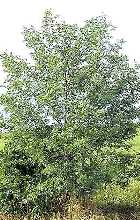View crop
View crop Data sheet EcoPortSesbania sesban
 |
|
| Notes |
|---|
| BRIEF DESCRIPTION A small tree or an erect, stout shrub reaching up to 6-8 m. Flowers are uniformly yellow, about 1.5 cm long and pods are somewhat flattened, slightly twisted and 20-25 cm long. USES The wood is soft and used as fuel and charcoal, arrows, pipes, toys, roofing and can be plaited into mats. The leaves are used as human food, fed to livestock and used as green manure. Fresh seeds are poisonous to humans but are eaten after soaking for 3 days and cooking. Cordage fiber is obtained from the bark and flowers are used as food. The tree is used for shade, support, windbreak, soil improvement and in contour hedges. KILLING T It can withstand cool temperatures, but not frost. GROWING PERIOD Perennial but short-lived. Living up to 10 years, growing 120-365 days per year. Can reach a height of 1.5-2 m in 70-100 days after sowing and up to 5 m in a year. COMMON NAMES Egyptian rattle pod, Sesban, Jayanti, janti, Puri, Katuray, Katodai, Yay-tha-kyee, Yethugyi, Snao kook, Sapao lom, Sami, Saphaolom, Dien-dien, Suriminta, Soriminta. FURTHER INF Scientific synonyms: S. aegyptiaca, S. punctata, Aeschynomene sesban. There are following subsp: sesban var. sesban, sesban var. bicolor, sesban var. nubica and sesban var. zambesiaca. The plant can be grown in the tropics at altitude between 100-2300 m, in Pakistan between 300-500 m. It cannot withstand waterlogging immediately after germination or in the early stages of seedling development. Optimum yield of firewood is 75 t/ha, (10% moisture), the wood weighs 432 kg/m3. The tree needs protection against animal browsing. It is a good nitrogen fixer and is is mentioned as a possible agroforestry species. | Sources |
| Grassland Index Skerman P 1988 pp 585 [USE, DRA, TEXT] Evans D 1987 AGLS A 1991 31 Evans D 1990 33-35 [SAL, KTMP, PH, DRA, USE, RAIN] White F 1983 pp 266 267 Mannetje L 1992 pp 198-201 [USE, RAIN, TEXT, SAL, PH, DRA, FER] National RC 1983c pp 64-65 [USE, TEMP, RAIN, TEXT, PH, DRA, SAL] Hensleigh T 1988 pp 298-301 [PH, DRA, SAL, TEXT, TEMP, RAIN, USE] |